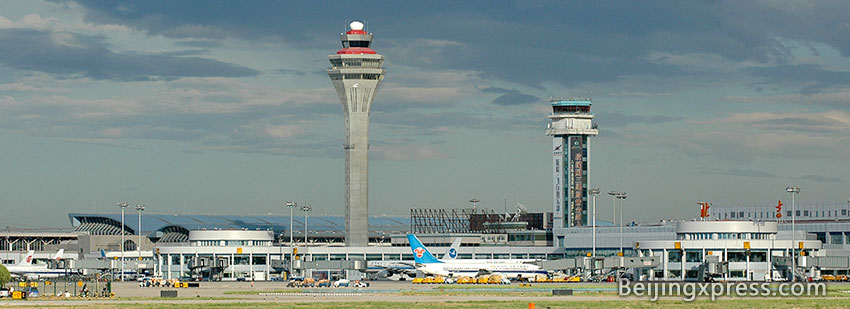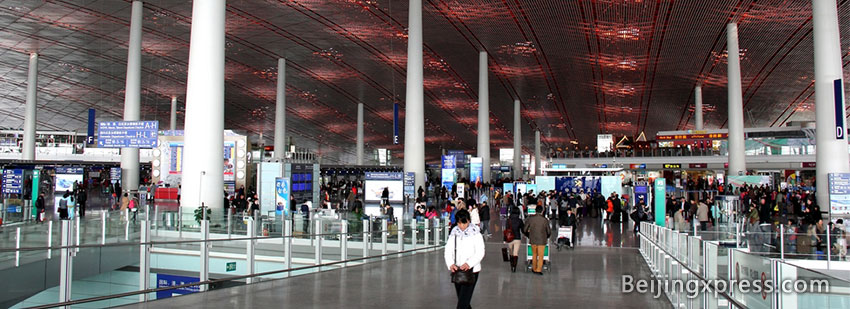
Beijing Airport normally refers to Beijing Capital International Airport (IATA: PEK, ICAO: ZBAA), which is the main international airport serving Beijing. It is located in Chaoyang District but 32 km northeast of Beijing's city center. The airport is owned and operated by the Beijing Capital International Airport Company Limited, a state-own company.
Beijing Capital International Airport is the main hub for Air China, the flag carrier of the People's Republic of China, which flies to around 120 destinations (excluding cargo) from Beijing. Hainan and China Southern Airlines also use the airport as their hub.
If you are looking for other airports information you can click Beijing Daxing Airport and Beijing Nanyuan Airport. We also have Airlines in Beijing Airport and destinations available, maybe Airport Transport Guide is more useful.
Beijing Airport Terminal 1
Terminal 1 opened on January 1, 1980. Featuring 16 gates, it was the operational base for China Southern Airlines' domestic routes and a few other airlines such as Xiamen Airlines and Chongqing Airlines, and was originally planned to handle domestic traffic, excluding those to Hong Kong and Macau.
Terminal 1 reopened for a second time on June 27, 2008, and became the operational base for all domestic flights operated by the HNA Group, including those of Hainan Airlines, Grand China Air, Deer Air and Tianjin Airlines, while the international flights and the ones between Hong Kong, Macau, Taiwan and Beijing of the HNA Group remaining in Terminal 2.
Beijing Airport Terminal 2
Terminal 2 opened on November 1, 1999. This terminal now houses China Southern Airlines, China Eastern Airlines, Skyteam, Air Koryo, and other domestic and international flights after Air China, Shanghai Airlines, Star Alliance members, Oneworld members moved operations to the new Terminal 3. A gate capable of handling the A380 (gate 21) was also built at the terminal.
Beijing Airport Terminal 3

Terminal 3 fully operational on March 26, 2008. Currently, it mainly houses Air China, Oneworld, Star Alliance, and other domestic and international flights. Star Alliance members LOT Polish Airlines, Scandinavian Airlines System, Lufthansa, Austrian Airlines, United, Turkish Airlines (with Star Alliance livery), Thai Airways International, Singapore Airlines, and Air China use Terminal 3-E as part of the Move Under One Roof program to co-locate alliance members.
Terminal 3 was designed by a consortium of NACO (Netherlands Airport Consultants B.V), UK Architect Foster and Partners and ARUP. Lighting was designed by UK lighting architects Speirs and Major Associates. The budget of the expansion is US$3.5 billion. Terminal 3 was the largest airport terminal-building complex in the world to be built in a single phase with 986,000 m2 (10,610,000 sq ft) in total floor area at its opening. It features a main passenger terminal (Terminal 3C), two satellite concourses (Terminal 3D and Terminal 3E) and five floors above ground and two underground, with the letters "A and B" omitted to avoid confusions with the existing Terminals 1 and 2. Terminal 3C is dedicated for domestic flights, Terminal 3E for international flights, and Terminal 3D, called the "Olympics Hall", was used for charter flights during the Beijing Olympics, and will be used by international flights in the future.
Terminal 3 of the BCIA is currently the second largest airport passenger terminal building of the world. Its title as the world's largest was surrendered on October 14, 2008 to Dubai International Airport's Terminal 3 which has 1,980,000 m2 (21,300,000 sq ft) of floor space.
Food and Beverage
The T3 food-service area is called a “global kitchen,” where 72 stores provide food ranging from formal dishes to fast food, from Chinese to western, from bakery goods to ice cream. Airport officials have promised that people who buy products at the airport will see the same prices as in Central Beijing.
Shopping in Beijing Airport
There is a 16,200 m2 (174,000 sq ft) domestic retail area, a 12,600 m2 (136,000 sq ft) duty-free-store area and a nearly 7,200 m2 (78,000 sq ft) convenience-service area, which includes banks, business centres, Internet services and more. At 45,200 m2 (487,000 sq ft), the commercial area is twice the size of Beijing’s Lufthansa Shopping Centres.